NASA Photos of Neil Armstrong
Neil Armstrong has died at the age of 82 Here are some photos of the great explorer collected over the yearsNeil Armstrong has died at the age of 82.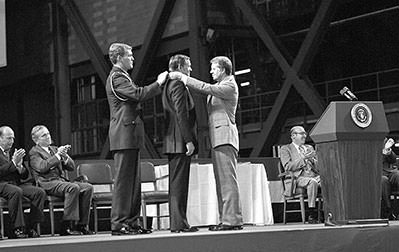
Neil Armstrong has died at the age of 82. Here are some photos of the great explorer collected over the years. All photos and captions belong to NASA.
Official Portrait
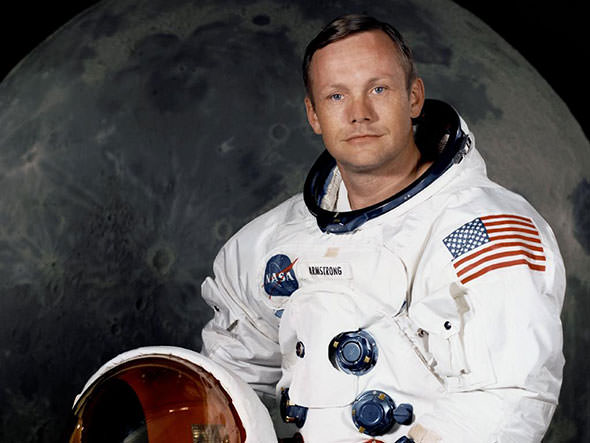
Test Pilot
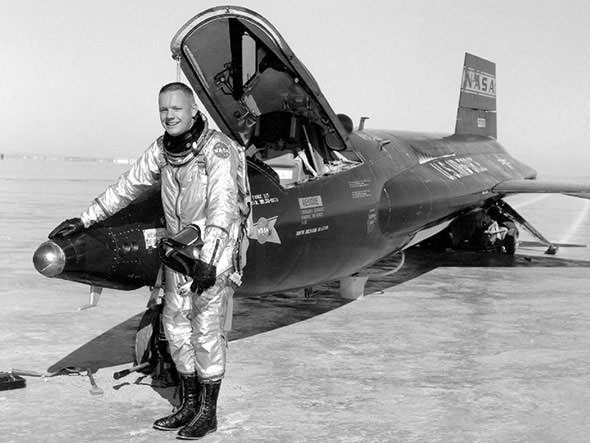
During re-entry from flight training at 207,000 feet in an X-15-3, Neil Armstrong inadvertently established a positive angle of attack during pull-out, and overshot Edwards Air Force Base in California, heading south at Mach 3 and 100,000 feet altitude. He finally managed to turn back while over the Rose Bowl in Pasadena, and had just enough energy to land on the south end of Rogers Dry Lake at Edwards. In the debriefing, someone asked how much clearance the X-15 had from the Joshua trees on the edge of the lakebed. “Oh, at least 100 feet…on either side,” said the chase pilot.
Boarding Gemini VIII
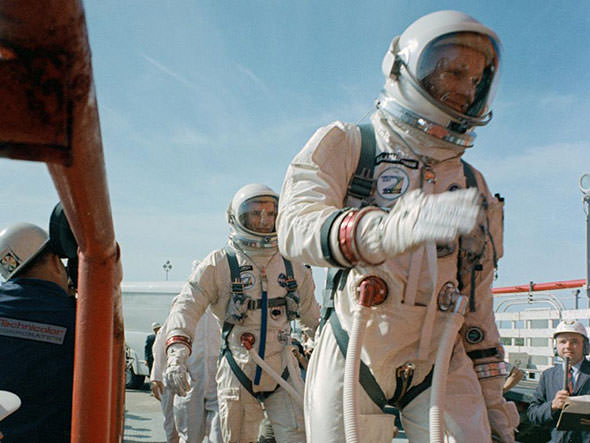
Commander Neil Armstrong (right) and pilot David R. Scott prepare to board the Gemini-Titan VIII. Gemini VIII successfully launched at 11:41 a.m. EST, March 16, 1966. The mission conducted the first docking of two spacecraft in orbit and landed safely back on Earth after an emergency abort.
“We Have Liftoff!”
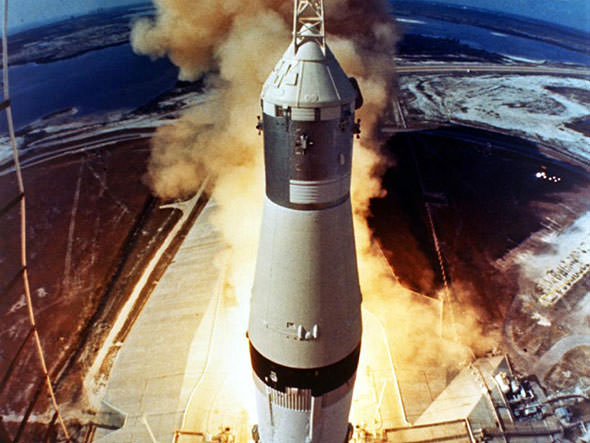
Apollo 11 leaves Earth for the Moon.
One Small Step

Apollo 11 astronauts trained on Earth to take individual photographs in succession in order to create a series of frames that could be assembled into panoramic images. This frame from [Buzz] Aldrin’s panorama of the Apollo 11 landing site is the only good picture of mission commander Neil Armstrong on the lunar surface.
Let’s Get Off This Rock
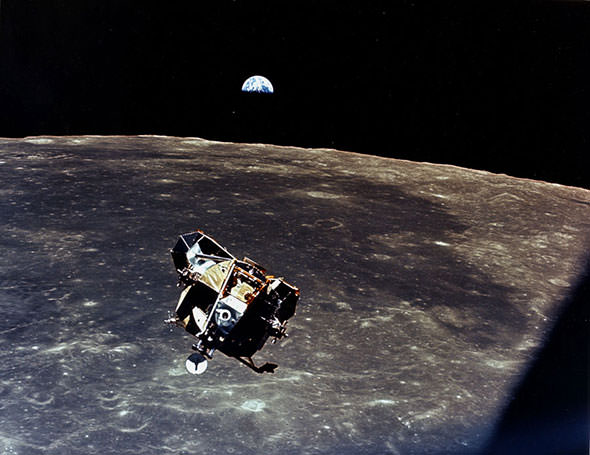
After proving that humanity has the ability to go beyond the confines of planet Earth, the first humans to walk on another world — Neil Armstrong and Buzz Aldrin — flew the ascent stage of their Lunar Module back to meet Michael Collins in the moon-orbiting Command and Service Module. Pictured above on July 21, 1969, the ascending spaceship was captured by Collins making its approach, with the Moon below, and Earth far in the distance.
In Quarantine
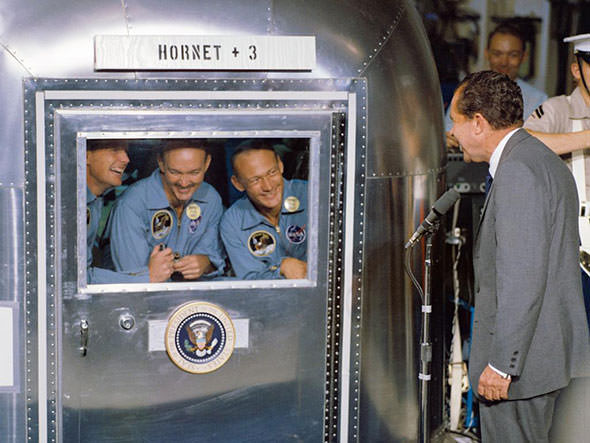
President Richard M. Nixon was in the central Pacific recovery area to welcome the Apollo 11 astronauts aboard the USS Hornet, prime recovery ship for the historic Apollo 11 lunar landing mission. Already confined to the Mobile Quarantine Facility (MQF) are (left to right) Neil A. Armstrong, commander; Michael Collins, command module pilot; and Edwin E. Aldrin Jr., lunar module pilot. Apollo 11 splashed down at 11:49 a.m. (CDT), July 24, 1969, about 812 nautical miles southwest of Hawaii and only 12 nautical miles from the USS Hornet.
Welcome Home
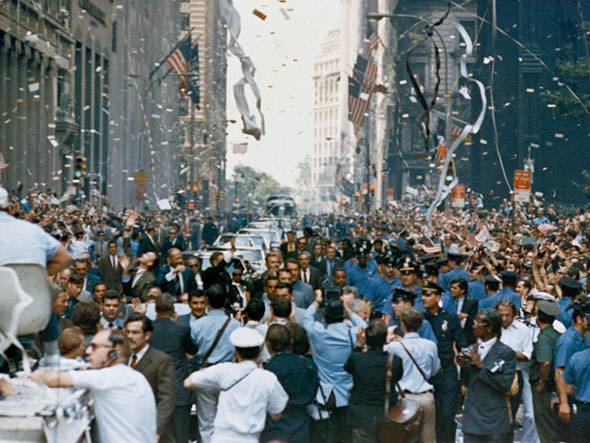
New York City welcomes the Apollo 11 crew in a ticker tape parade down Broadway and Park Avenue. Pictured in the lead car, from the right, are astronauts Neil A. Armstrong, Michael Collins and Buzz Aldrin. The three astronauts teamed for the first manned lunar landing, on July 20, 1969.
Giants Among Us
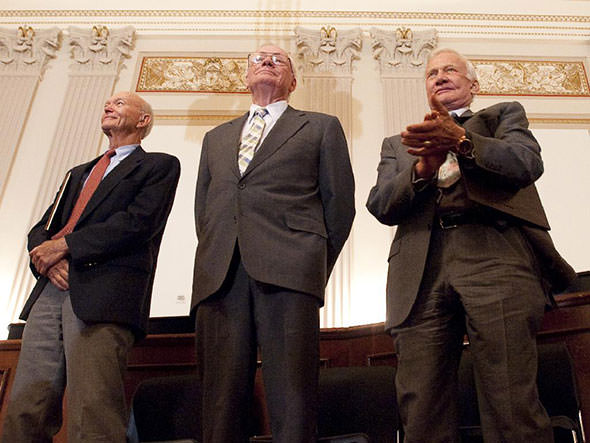
Apollo 11 astronauts, from left, Michael Collins, Neil Armstrong and Buzz Aldrin stand during a recognition ceremony at the U.S House of Representatives Committee on Science and Technology tribute to the Apollo 11 astronauts at the Cannon House Office Building on Capitol Hill on July 21, 2009, in Washington. The committee presented the three Apollo 11 astronauts with a framed copy of House Resolution 607 honoring their achievement, and announced passage of legislation awarding them and John Glenn the Congressional Gold Medal. Image Credit: NASA/Bill Ingalls
— Posted by Peter Z. Scheer. All photos and captions belong to NASA.
Your support matters…Independent journalism is under threat and overshadowed by heavily funded mainstream media.
You can help level the playing field. Become a member.
Your tax-deductible contribution keeps us digging beneath the headlines to give you thought-provoking, investigative reporting and analysis that unearths what's really happening- without compromise.
Give today to support our courageous, independent journalists.
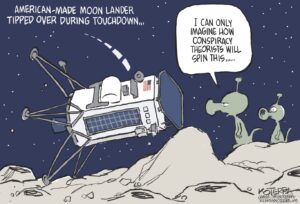
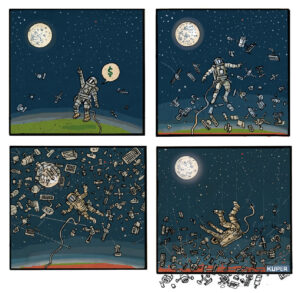
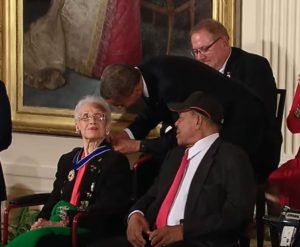

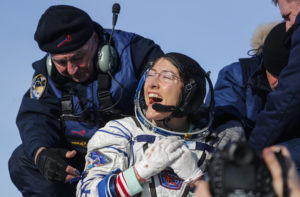

You need to be a supporter to comment.
There are currently no responses to this article.
Be the first to respond.